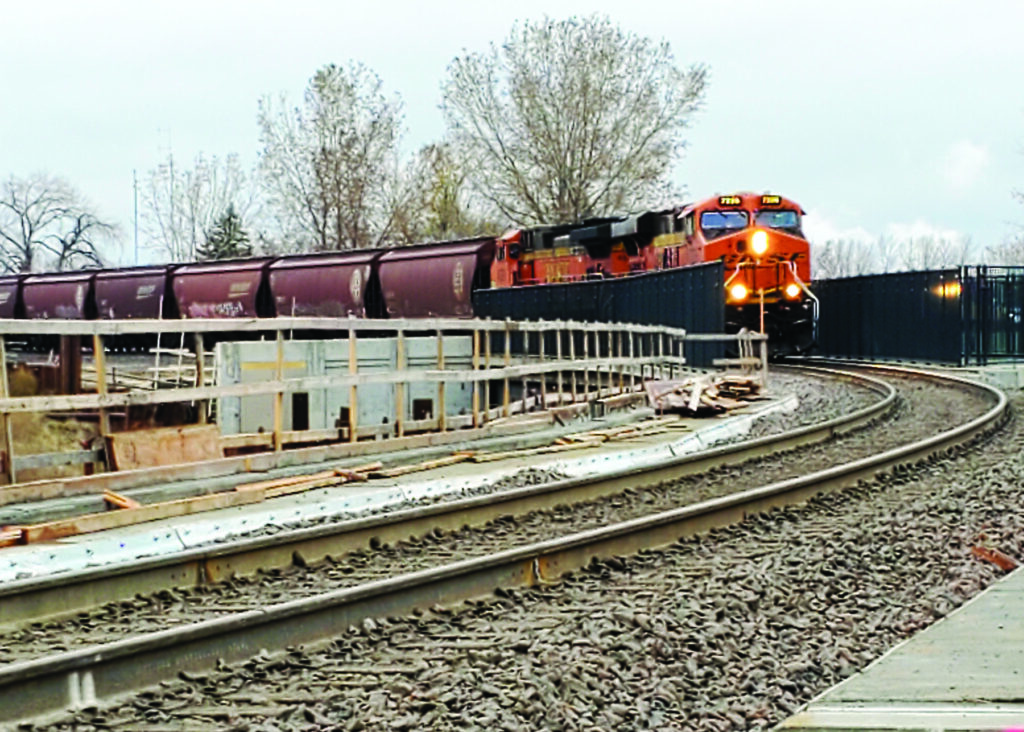
A BNSF train rolls across the final overpass completed last week in the SE Main/20-21st Street traffic project. Another BNSF track and one used by the Otter Tail Valley Railroad were completed earlier this fall.
Nancy Edmonds Hanson
The long-running SE Main/20-21st Street underpass project is going into its fourth winter, but the end is finally in sight.
Assistant city engineer Tom Trowbridge estimates that the $51 million project to untangle the snarl of major streets and railroad tracks is entering the winter slow-down 85 to 90% complete. With completion of the third railroad overpass, BNSF trains began running on the busiest of the trio of tracks last week.
With the “shoo-fly” – the temporary tracks that parallel 20th Street – no longer needed, crews can continue excavation of main intersection for auto traffic down below. Trowbridge said that 80,000 cubic yards of dirt needs to be removed beneath that portion of the project.
Because the removal will take place in early winter rather than last fall, Ames Construction will not need to seek permission for the overnight shifts that had been discussed earlier this year. “They can’t do the road work now anyway,” Trowbridge said, “so they will get the dirt hauled out on the day shift.”
Winter means that most remaining work will be stalled until spring arrives, probably in mid-April. At that point, crews will dig into installation of storm sewers, then grade and lay the sand and gravel base to drain the sunken roadway. The final step, the paving, is expected to be done by the first week in July 2022.
In the meantime, crews can make progress by pouring retaining walls where the shoo-fly now stands. That track has been removed, and soil from the embankment is being hauled away.
Meanwhile, soil borings and design work are underway for the city’s next big undertaking, the two-block-long 11th Street railroad underpass beneath Center Avenue connecting Main and First Avenue North. According to the engineer, the Minnesota Department of Transportation (which is heading the project) has hopes of being ready to bid the project in the fall of 2024. As it now stands, most of that work will be done in 2025.
The SE Main/20-21st Street project has been the most complicated and most expensive street project in Moorhead’s history. Construction has been plagued by problems caused by unstable soil. In 2019, the railroad grade bank failed in July, followed by similar slumping in the cut for storm sewers in September. “Once you have that kind of problem, safety becomes a huge priority,” Trowbridge explained. “The bank slumping made everyone step back. From that point we all viewed every part of the process through that lens.”
When the interchange finally opens to both trains and drivers in 2022, will Trowbridge be the happiest man in the city? “Not me,” he chuckles, “but I’ll be in line right behind the thousand residents who’ve had to put up with this for the past four years.”


